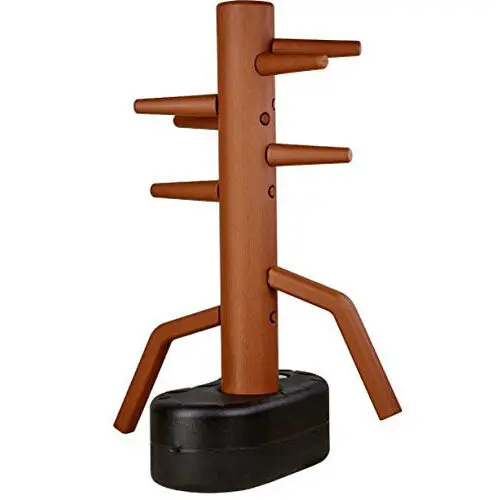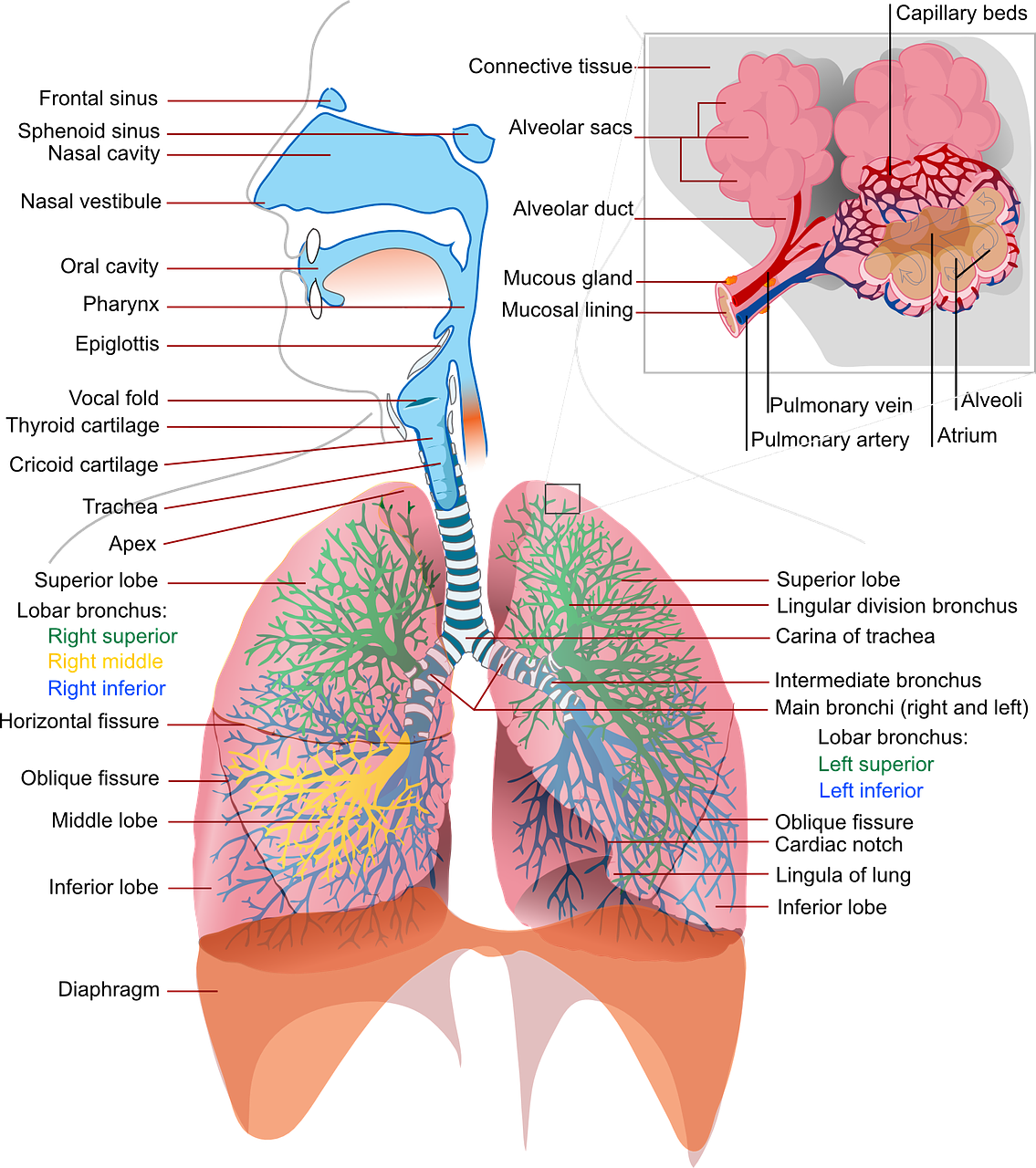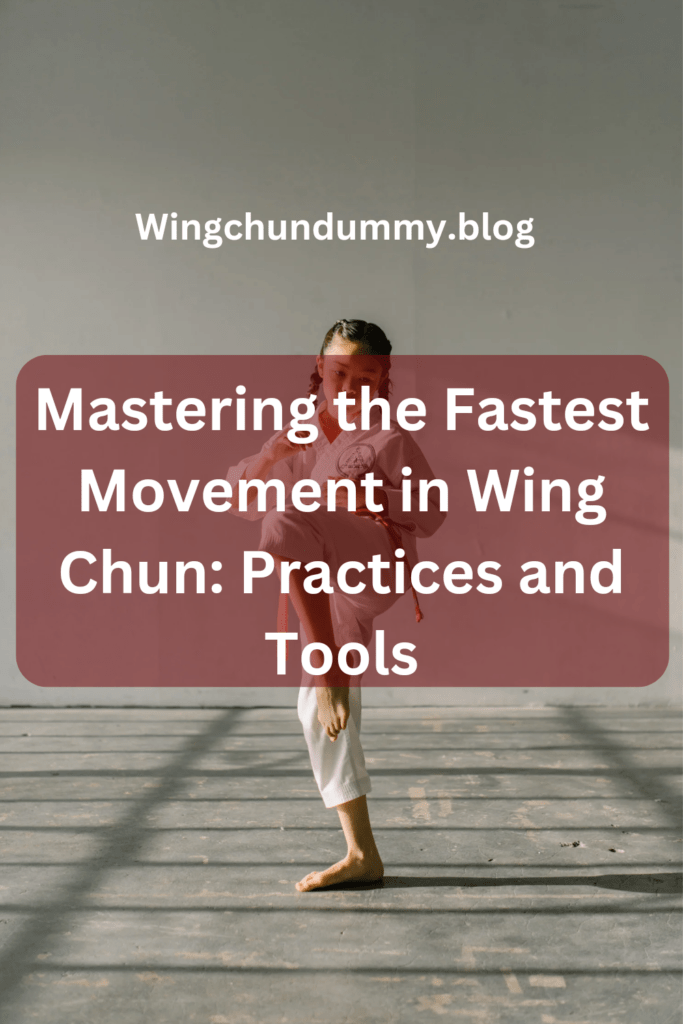Wing Chun Speed
Wing Chun is a traditional Chinese martial art that has garnered global recognition for its emphasis on efficiency, direct movements, and rapid execution.
Rooted in the Southern Shaolin tradition, it was developed to provide practical self-defense solutions, focusing on close-range combat.
Wing Chun practitioners prioritize economy of movement and aim to neutralize threats swiftly and effectively.
A cornerstone of Wing Chun’s philosophy is the principle of speed.
Speed in Wing Chun is not merely about quickness.
but about delivering powerful, precise strikes in rapid succession.
This principle is epitomized in techniques such as the chain punch (also known as “Lin Wan Kuen”).
which is often cited as one of the fastest movements in Wing Chun.
The chain punch involves a series of continuous, rapid punches directed towards an opponent’s centerline, effectively overwhelming them with a barrage of strikes.
Mastering the chain punch and other swift techniques is crucial for both self-defense and competitive contexts.
In self-defense scenarios, the ability to deliver rapid, decisive blows can be the difference between neutralizing a threat and becoming a victim.
In competitive martial arts, speed can provide a significant advantage, allowing a practitioner to outpace and outmaneuver their opponents.
Understanding and honing these fast movements require rigorous practice and an in-depth comprehension of Wing Chun’s fundamental principles.
Practitioners must develop not only physical agility and strength but also the mental acuity to execute techniques with precision under pressure.
As such, the fastest movements in Wing Chun are a testament to the art’s blend of physical prowess and strategic thinking, underscoring their importance in the broader context of martial arts training.
The Fundamentals of Speed in Wing Chun
Speed in Wing Chun is not merely a matter of moving quickly; it is the outcome of mastering several fundamental principles.
One of the core tenets is relaxation. In Wing Chun, tension is viewed as an impediment to speed.
When muscles are tense, they restrict fluid movement and slow down reaction times.
Therefore, practitioners are trained to relax their muscles, allowing for more efficient and rapid execution of techniques.
Another crucial principle is the economy of motion.
Wing Chun emphasizes minimizing unnecessary movements.
Each action is designed to be as direct and efficient as possible.
For example, instead of swinging a punch in a wide arc, Wing Chun practitioners deliver strikes along the shortest possible path.
This not only conserves energy but also reduces the time it takes to complete a movement.
Proper body mechanics also play an integral role in achieving speed.
Wing Chun techniques are built around the alignment of the body to maximize power and speed.
By utilizing the body’s natural structure and leveraging the principles of physics, practitioners can generate quick, powerful movements with minimal effort.
This involves coordinating the entire body—from the feet to the hands—to move in a harmonized manner.
Muscle memory is another vital component. Repetition of movements ingrains them into the muscle memory, allowing for faster and more precise execution.
Through consistent practice, techniques become second nature, enabling practitioners to perform them without conscious thought.
This automaticity is critical in real-world applications where split-second reactions can make a significant difference.
These principles are meticulously integrated into training routines.
Drills that focus on relaxation, such as Chi Sau (sticking hands), help practitioners develop sensitivity and fluidity.
Repetitive practice of forms and techniques hones muscle memory.
while sparring sessions provide a dynamic environment to apply the principles of economy of motion and proper body mechanics.
Together, these elements create a comprehensive framework that equips Wing Chun practitioners with the ability to achieve rapid and effective movements.
Essential Drills for Enhancing Speed
Improving speed in Wing Chun is a multifaceted process that requires consistent practice through targeted drills.
One foundational exercise is chain punching, a staple in Wing Chun training.
This drill involves executing a rapid series of straight punches, ensuring each punch flows seamlessly into the next.
To perform chain punching, stand in a basic fighting stance and extend your fist in a straight line from your chest, retracting it swiftly while the other fist follows suit.

This repetitive action not only hones muscle memory but also enhances the speed of your hand movements, making your punches both quick and efficient.
Another vital drill is reflex training with a partner, often referred to as Chi Sao or “sticky hands.”
This exercise focuses on improving sensitivity and reaction times.
During Chi Sao, both practitioners maintain continuous contact with each other’s forearms while attempting to create openings for strikes.
The unpredictability of your partner’s movements forces you to react swiftly, refining your reflexes.
and ensuring you can respond to sudden attacks with minimal delay.
The key benefit of this drill is its ability to simulate real combat scenarios.
enhancing your speed and adaptability in a controlled environment.
Solo drills, such as shadowboxing and rapid hand movement exercises, are also crucial for speed development.
Shadowboxing involves practicing your techniques and combinations without a partner, allowing you to focus on speed and precision.
Perform a series of punches, blocks, and evasive maneuvers at a fast pace, visualizing an opponent in front of you.
This not only helps in perfecting your form but also in increasing your speed and coordination.
Additionally, exercises like striking a speed bag or using a Wing Chun dummy can further aid in developing faster hand movements and striking efficiency.
Incorporating these drills into regular training routines can significantly enhance your speed in Wing Chun.
By consistently practicing chain punching, engaging in reflex training with a partner, and performing solo drills.
practitioners can develop rapid reactions and execution.
essential for mastering the swift movements characteristic of Wing Chun.
Role of Chi Sau (Sticky Hands) in Speed Development

Chi Sau, or “Sticky Hands,” is a cornerstone practice in Wing Chun, designed to enhance a practitioner’s sensitivity, reflexes, and speed.
This exercise entails maintaining constant contact with an opponent’s arms, allowing practitioners to develop an acute sense of touch and reaction.
In Chi Sau, both partners engage in a dynamic flow of movements, striving to create openings while simultaneously defending against attacks.
The continuous contact during this exercise forces practitioners to react instantly to their partner’s movements, honing their reflexes and speed.
One of the critical aspects of Chi Sau is its ability to cultivate tactile sensitivity.
By maintaining contact with the opponent’s arms, practitioners learn to feel and anticipate movements, enabling them to respond more rapidly and effectively.
This heightened sense of touch is crucial in real-life combat scenarios where visual cues may be insufficient.
The practice of Chi Sau emphasizes relaxation and fluidity, allowing practitioners to move swiftly and efficiently without unnecessary tension.
Moreover, Chi Sau is instrumental in developing reflexes.
The exercise’s dynamic nature requires practitioners to adapt quickly to changing situations, fostering rapid decision-making and movement.
By repeatedly engaging in Chi Sau, practitioners can significantly improve their reflexes.
making them more adept at countering attacks and exploiting openings during combat.
In addition to sensitivity and reflexes, Chi Sau also plays a vital role in speed development.
The exercise encourages continuous, flowing motion, which helps practitioners to refine their hand movements and enhance their overall speed.
Through regular practice, Chi Sau enables Wing Chun practitioners to execute techniques with greater speed and precision, essential qualities for effective self-defense.
In essence, Chi Sau is a multifaceted exercise that contributes significantly to speed development in Wing Chun.
By fostering sensitivity, improving reflexes, and promoting fluid motion.
Chi Sau equips practitioners with the skills needed to move swiftly and decisively in combat situations.
Training Tools and Equipment

Wing Chun, a dynamic martial art known for its speed and efficiency, demands rigorous training to master its techniques.
Various tools and equipment are integral to developing the speed that Wing Chun practitioners aspire to achieve.
Among these, the Wooden Dummy, or Muk Yan Jong, is perhaps the most iconic.
This sturdy wooden apparatus is designed to simulate an opponent, allowing practitioners to refine their strikes, blocks, and movements.
By practicing forms on the Wooden Dummy, one can enhance precision, timing, and, crucially, speed.
Focus mitts are another essential tool in Wing Chun training.
These padded targets are held by a training partner and are used to practice strikes and combinations.
The immediate feedback provided by focus mitts helps in improving hand-eye coordination and reaction time.
Regular use of focus mitts can significantly increase the speed of punches and the fluidity of combinations.
making them indispensable in speed training.
Speed bags, often associated with boxing, also play a vital role in Wing Chun training.
These small, air-filled bags rebound quickly when struck, necessitating rapid and precise striking.
Training with speed bags not only enhances hand speed but also promotes rhythmic striking and timing.
The constant motion and the need for quick reactions make speed bags an excellent tool for developing both speed and endurance.
Resistance bands are versatile tools that can greatly augment Wing Chun speed training.
By adding resistance to various movements, these bands help in building muscle strength and explosive power.
Incorporating resistance bands into drills for punching, pulling, and even footwork can lead to increased speed and agility.
The resistance provided by the bands ensures that muscles work harder, resulting in faster and more powerful movements over time.
Each of these tools contributes uniquely to the development of speed in Wing Chun.
Whether it’s through the precision training of the Wooden Dummy, the reactive practice with focus mitts.
the rhythmic striking on speed bags, or the muscle-building resistance bands.
these tools collectively enhance a practitioner’s speed and overall effectiveness in Wing Chun.
Mindfulness and Mental Training
In the realm of Wing Chun, physical prowess alone is not sufficient to master the art’s fastest movements.
Integral to achieving speed and precision is a robust mental training regimen, grounded in mindfulness.
Mindfulness helps practitioners maintain focus, calmness, and an acute sense of awareness.
all of which are essential for executing rapid and accurate techniques.
One of the primary methods of mental training in Wing Chun is visualization.
Visualization involves mentally rehearsing movements and techniques.
envisioning oneself performing them flawlessly and with speed.
This mental practice not only builds confidence but also reinforces neural pathways.

making the physical execution of these techniques more fluid and instinctive.
By regularly visualizing complex sequences, a practitioner can enhance their muscle memory and reaction times.
Meditation is another cornerstone of mental training in Wing Chun.
Through meditation, practitioners cultivate a state of mental tranquility and heightened concentration.
This practice helps in managing stress and maintaining a calm demeanor, even in high-pressure situations.
A calm mind is less likely to be distracted, allowing for quicker decision-making and more precise movements.
Regular meditation can also improve overall mental resilience.
enabling practitioners to recover swiftly from mistakes and stay focused on their training objectives.
Focused breathing exercises complement both visualization and meditation.

These exercises involve controlling one’s breath to achieve a state of mental clarity and physical relaxation.
By synchronizing breath with movement, practitioners can maintain a steady rhythm, which is crucial for executing fast and controlled techniques.
Focused breathing also aids in managing the body’s energy levels, ensuring that practitioners do not become fatigued quickly during intensive training sessions.
Incorporating these mindfulness and mental training techniques into a Wing Chun practice can significantly enhance a practitioner’s ability to perform fast and precise movements.
Through consistent mental conditioning, one can achieve a harmonious balance between mind and body.
paving the way for mastering the art’s most rapid techniques.
Common Mistakes and How to Avoid Them
Developing speed in Wing Chun is an intricate process that requires precision and practice.
However, practitioners often encounter common pitfalls that can impede their progress.
One prevalent mistake is excessive tension in the muscles.
While it might seem intuitive to engage muscles fully to generate speed, excessive tension actually slows down movements and leads to quicker fatigue.
To avoid this, focus on maintaining a relaxed yet alert posture.
Visualization techniques, such as imagining your limbs moving through water, can help achieve the right balance of relaxation and tension.

Improper form is another frequent error.
Speed must be built on a foundation of correct technique.
Rushing through movements without proper alignment and structure can lead to inefficient energy use and potential injury.
Practitioners should consistently review and refine their forms under the guidance of an experienced instructor.
Emphasizing slow, deliberate practice before gradually increasing speed ensures that correct form is ingrained and not sacrificed for the sake of quickness.
Lack of coordination is also a common issue that hinders speed development.
Wing Chun requires seamless coordination between various body parts to execute fast and effective movements.
To enhance coordination, practitioners should engage in drills that emphasize synchronizing hand and foot movements.
Drills such as the “Chain Punch” combined with footwork exercises can significantly improve the harmonious movement necessary for speed.
Regular practice of these drills helps in ingraining muscle memory, leading to more fluid and coordinated actions.
Finally, insufficient focus on breathing can be a hidden barrier to achieving speed.
Proper breathing techniques ensure that the body remains relaxed and well-oxygenated, promoting better performance.
Practitioners should incorporate breathing exercises into their training regimen, focusing on deep, controlled breaths that align with their movements.
This not only enhances speed but also sustains endurance during longer practice sessions.
By addressing these common mistakes — excessive tension, improper form, lack of coordination.
and neglecting breathing techniques — practitioners can make significant strides in mastering the fastest movements in Wing Chun.
Each corrective measure contributes to a safer and more effective training experience, paving the way for remarkable speed development.
Integrating Speed into Sparring and Real-World Scenarios
Integrating speed into sparring and real-world scenarios requires a nuanced understanding of timing, precision, and adaptability.
While developing rapid movements is essential, their effectiveness hinges on how well they are applied in dynamic situations.
In sparring sessions, the focus should be on seamlessly incorporating speed into your existing techniques.
This involves not only executing strikes quickly but also maintaining control and accuracy.
Practitioners should aim to surprise their opponents with sudden bursts of speed, disrupting their rhythm and creating openings for counterattacks.
One effective strategy is to use feints and deceptive movements to mask your true intentions.
By doing so, you can provoke reactions from your opponent and exploit their momentary lapses in defense.
For example, a quick, deceptive jab can force an opponent to react prematurely, leaving them vulnerable to a follow-up strike.
The key is to remain unpredictable and to vary the speed and intensity of your movements, keeping your opponent off balance.
In real-world self-defense situations, the ability to integrate speed becomes even more critical.
The unpredictability and high stakes of such encounters mean that rapid, decisive actions can make all the difference.
Practitioners should focus on using their speed to neutralize threats swiftly and efficiently.
This could involve quick, targeted strikes to vulnerable areas, or rapid evasive maneuvers to create distance and avoid harm.
Adaptability is also crucial in both sparring and self-defense.
Situations can change in an instant, and the ability to adjust your speed and tactics accordingly can be the deciding factor in a confrontation.
Practitioners should train to respond to various scenarios, developing a keen sense of timing that allows them to exploit fleeting opportunities.
Whether it’s a sudden change in an opponent’s stance or an unexpected attack.
being able to adapt quickly and effectively is a hallmark of a skilled Wing Chun practitioner.
Ultimately, the integration of speed in Wing Chun is not just about moving quickly; it’s about moving smartly.
By honing your timing, precision, and adaptability.
you can maximize the effectiveness of your rapid movements, both in controlled sparring environments and unpredictable real-world situations.


